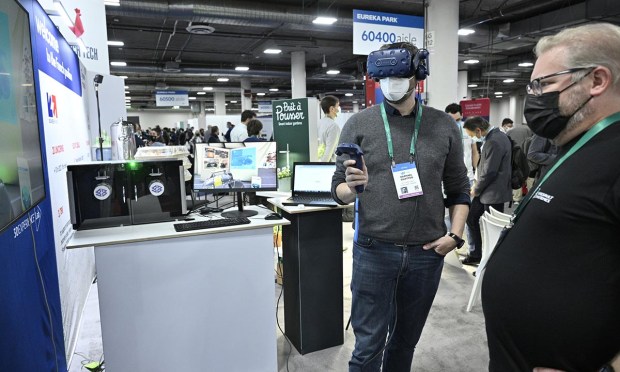Art Imitates Life as COVID-Crimped CES Showcases Retail Tools for Touchless World

Scaled back and stripped-down, yet brash and defiant as always, the annual Las Vegas tech fest known as CES is loath to disappoint, given its something-for-everyone array of things you didn’t know you needed.
For the retail-minded consumer, whether attending in-person or browsing online, this year’s event unveiled more than its share of immersive experiences and artificial intelligence (AI)-driven tools aimed at engaging with connected consumers who are mostly stuck in a contactless world.
With the stubborn strains of COVID-19 refusing to leave, consumers’ desire to escape reality has never been greater. When you combine that with the great American habit known as retail therapy, the obvious first stop would be a place where make-believe meets Main Street and everyone can just hang out, have fun and not get sick — aka, the metaverse.
Metaverse Immersion
If this year’s CES could be summed up in one word, it would probably be “meta” — now an official retail buzzword, if it wasn’t already. In short, if you’re an on-trend retailer and you’re not talking metaverse, you’re not talking.
One company dipping more than just its toe into the metaverse is Samsung, including its new online experience called “My House”. This world is not intended to look realistic, but instead is more like being part of a cartoon.
Hosted on Zepeto, a South Korean metaverse platform, “My House” lets consumers shop for products and appliances like a projector, a vacuum and an air purifier first-hand, showing them exactly what they look like in someone else’s simulated house. The goal of this is to help consumers better envision how these appliances and products would work in their own homes.
Compared to scrolling through flat, two-dimensional product search results in a grid, this kind of 3D interaction is definitely a step forward, and therefore one that is likely to be warmly received by all manner of retailers.
Of course, whether or not people go for it and it leads to higher conversion rates remains to be seen, but at the very least, it perhaps offers people a bit of escapism as well as the chance to maybe get some new interior design inspiration.
Another CES exhibitor, Owo, literally wants you to feel the metaverse via its wearable haptic vest that lets metaverse explorers and visitors experience real-time physical sensations more realistically. While wearing this vest — which looks more like a fitted tee-shirt — if something touches you, you can feel the pressure of it through 30 different vibrations it emits that correspond to what someone’s avatar is experiencing.
This makes it possible, for instance, to experience something like a hug or a handshake more realistically in the metaverse, ultimately helping consumers connect more deeply, emotionally and psychologically to the metaverse.
Robots That Deliver
If CES is any guide, more robots are coming to the retail world. For example, LG plans to launch CLOi, an autonomous delivery system with four wheels that uses AI to figure out how to navigate difficult physical landscapes like stairs or snow. In short, it can bring items door-to-door or down the street.
These robots — which can travel over three feet per second — can be programmed in various ways to serve consumers in different ways, such as robots taking the role of waiters, security guards and help desks.
Some of LG’s robots may prove useful for retailers looking to streamline logistics. For instance, LG’s CLOi ServeBot can carry 37 pounds to various destinations. Meanwhile, CLOi’s GuideBot — with its ability to recognize what someone is saying and offering touch recognition — can direct guests, which may prove useful in a large store setting.
“CLOi, where can I find the paper towel?” It’s easy to see how that would be both useful and lucrative, as the GuideBot also displays advertisements and messaging on its screen. When not fielding questions, LG says CLOi can even seamlessly transition into a security camera.
Contactless Shopping
Perhaps fittingly, safe everything — including shopping — was another key theme on display at this year’s scaled-down CES. For example, the technology company Merkle rolled out Scan & Know, which lets consumers who are physically inside of a store scan a product with their cell phone camera, giving easy access to additional product information.
From there, consumers can then add items to their wish lists or registries. Scan & Know is already connected to eCommerce companies like Shopify, Salesforce Commerce Cloud, Adobe Commerce, BigCommerce and more, with additional options reportedly on the way.
Merkle also launched Scan & Go, which offers consumers the ability to pay for items without having to stand in a check-out line.
It’s unclear if CES’ retail-focused products will prove more gimmicky or short-lived than disruptive as they make their way into the retail marketplace — and a world that is as rife for innovation as it is for post-COVID normalcy.